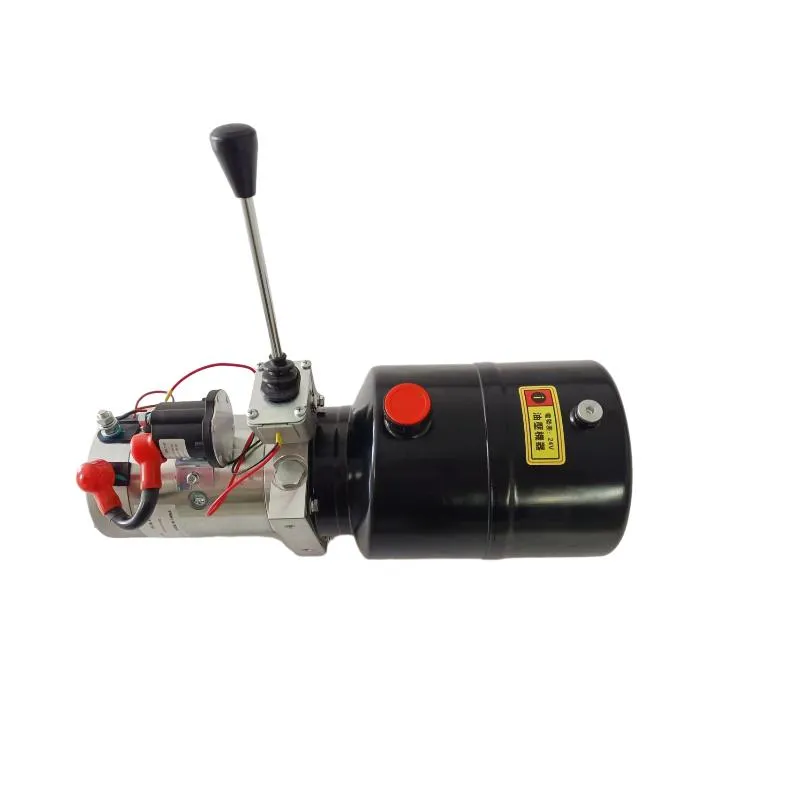Nov . 05, 2024 20:31 Back to list
seals in hydraulic cylinder products
Understanding Seals in Hydraulic Cylinder Products Key Components for Efficient Performance
Hydraulic systems are fundamental in various industrial applications, from construction machinery to automotive systems. Central to the success of these hydraulic systems are hydraulic cylinders, which convert hydraulic energy into mechanical power. However, the efficiency and longevity of these cylinders rely significantly on the seals used within them. This article delves into the importance, types, and considerations surrounding seals in hydraulic cylinder products.
The Role of Seals in Hydraulic Cylinders
Seals play a crucial role in hydraulic cylinders by preventing hydraulic fluid from leaking out and keeping contaminants from entering the cylinder. This is vital because any loss of fluid can lead to reduced system efficiency and can cause catastrophic failure. Moreover, contaminants can compromise the integrity of the hydraulic fluid, leading to fluid degradation and equipment damage.
Effective sealing ensures that the hydraulic system maintains the appropriate pressure, allowing for the accurate transmission of force. This is especially critical in applications where precision and reliability are paramount, such as in aerospace, automotive, and manufacturing sectors.
Types of Seals Used in Hydraulic Cylinders
There are several types of seals utilized in hydraulic cylinder products, each designed to perform specific functions
1. Rod Seals These seals are responsible for preventing fluid from leaking along the rod that extends from the hydraulic cylinder. They are typically designed to handle high pressures and maintain a low-friction environment to ensure smooth movement.
2. Piston Seals Piston seals are placed between the piston and the cylinder wall. Their primary function is to maintain hydraulic pressure while allowing smooth movement of the piston. Different designs, such as O-rings and U-cups, are utilized based on the application's pressure and temperature requirements.
3. Guiding Seals These seals ensure that the rod moves smoothly within the cylinder by preventing lateral movement. They help reduce wear on the rod and extend the overall lifespan of the hydraulic cylinder.
seals in hydraulic cylinder products

4. Scrapers and Wipers Scrapers are designed to remove dirt and debris from the rod before it enters the cylinder. This function is crucial in prolonged operational environments to prevent dust and contaminants from causing wear on the seals and other internal components.
Factors Influencing Seal Performance
Several factors can influence the performance and durability of seals in hydraulic cylinders
- Material Selection Seals are typically made from elastomers like Nitrile, FKM (Viton), or polyurethane. The choice of material is crucial, as it must withstand the specific temperature, pressure, and chemical environment of the hydraulic system. For instance, FKM is commonly used in high-temperature applications due to its excellent thermal stability.
- Pressure and Temperature Hydraulic seals must be designed to handle the specific pressure and temperature ranges of their application. Over time, thermal cycling and high pressure can degrade seals, leading to leaks and system failures.
- Surface Finish The finish of the rod and cylinder barrel surfaces can significantly affect seal performance. Rough surfaces can cause wear and lead to premature seal failure. Therefore, proper machining and finishing of these surfaces are essential.
- Installation Proper installation of seals is vital to ensure they function correctly. Misalignment or improper placement can lead to leaks and damage.
Maintenance and Replacement
Regular inspection of seals in hydraulic cylinders is essential for maintaining system integrity. Signs of wear, such as leaking fluid or reduced performance, are indicators that seals may need replacement. Performing timely maintenance can prevent costly downtimes and repairs, ensuring that hydraulic systems function smoothly.
In conclusion, seals in hydraulic cylinders are critical components that greatly influence the performance and reliability of hydraulic systems. With the right materials, design, and installation, these seals can provide efficient service life, preventing failures and ensuring operational effectiveness across various applications. Understanding the roles and intricacies of these seals is crucial for engineers and technicians who strive to achieve optimal performance in hydraulic systems. As technology advances, continued innovation in seal materials and designs will further enhance the capabilities and lifespan of hydraulic cylinders, paving the way for more reliable hydraulic solutions.
-
Fork Lift Power Units - Hebei Shenghan | Efficiency, Reliability
NewsJul.13,2025
-
1.5-Ton Turbocharged Cylinder-Hebei Shenghan|Hydraulic Solution,Energy Efficiency
NewsJul.13,2025
-
Auto Hoist Power Units-Hebei Shenghan|Efficiency&Industrial Lifting
NewsJul.13,2025
-
Double Acting Power Units-Hebei Shenghan|Hydraulic Solutions,Industrial Efficiency
NewsJul.13,2025
-
1.5 Ton Lifting Cylinder 70/82-40-290-535 - High-Performance Hydraulic Solution | Hebei Shenghan
NewsJul.13,2025
-
Fork Lift Power Units - Hebei Shenghan | Efficiency&Reliability
NewsJul.13,2025
